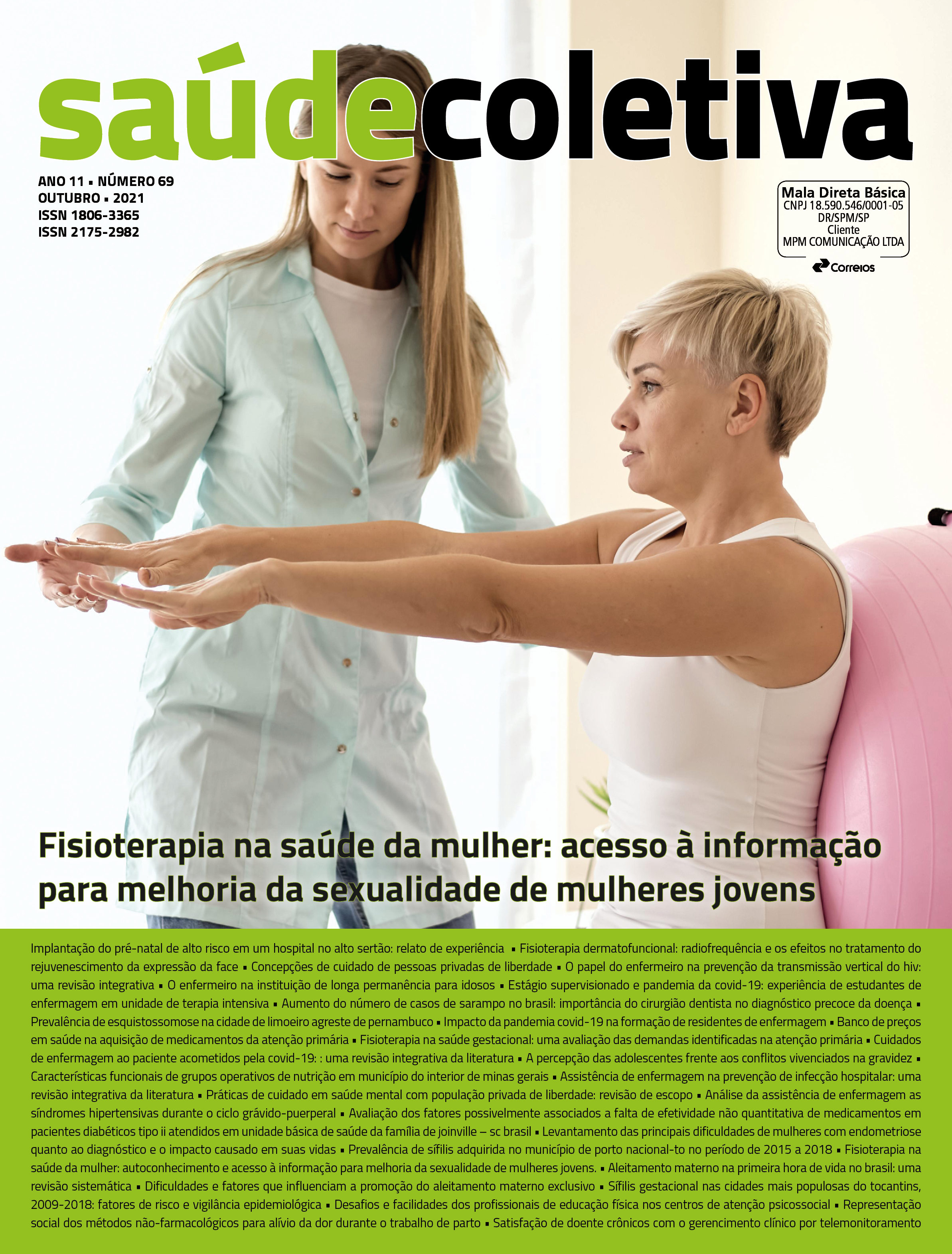Health geography: sexual education inserted in the school curriculum
DOI:
https://doi.org/10.36489/saudecoletiva.2021v11i69p8359-8370Keywords:
Geography Medical, Sexuality, Adolescent, Health education, Sex educationAbstract
Objective: The paper shows a health education action whose objective was to insert the sex education issue as a content addressed in the Geography discipline. Method: The topic was approached through workshops developed with the Geography teacher and included in the annual planning. The main themes permeated the spatialization of Sexually Transmitted lnfections, and their ways of prevention. Results: lt was possible to note that teaching geography oriented to sex education may contribute to the better protection of adolescents from the southern region of Brazil. lt was also confirmed that the insertion of sex education as a transversal theme in the geography curriculum is possible through a multidisciplinary approach between education and health professionals. Conclusion: ln the context of educating for health, it is possible to consider that students could learn from Geography healthier and more caring behaviors regarding their sex lives. Therefore, the authors believe they are meeting the urgent needs of empowerment of children and adolescents, aiming at prevention as a way to reduce the sexually transmitted infections in Brazil and worldwide.
References
Vivancos R, Abubakar 1, Phillips-Howard P, Hunter PR. School-based sex education is associated with reduced risky sexual behaviour and sexually transmitted infections in young adults. Public Health. 2013;127(1):53-7. cação em saúde na escola: relato de experiência. Saúde Coletiva (Barueri). 2021;11(66):6587-98. 9. Andrade HHSM, de Mello MB, Sousa MH, Makuch MY, Bertoni N, Faúndes A. Changes in sexual behavior following a sex education program in Brazilian public schools. Cad Saude Publica. 2009;25(5):1168-76. 2. Santa Catarina. Proposta Curricular de Santa Catarina: formação integral na educação básica. Florianópolis: Secretaria do Estado da Educação; 2014. 3. Brasil. Boletim Epidemiológico DSTs/AIDS. 2018; 4. Currie CNGS, Roberts C, Morgan A, Smith R. Settertobulte W, Samdal O, et ai. Social determinants of health and well-being among young people. Health behavior in school-aged children (HBSC) study. lnternational report from the 2009/201 O survey. Copenhagen WHO Reg Off Eur. 2012; 5. Ues B, M. AVPG de, Machado JP, Duclós LC, de Souza GR, Simes A, et ai. The Public University in Brazil Is Revisiting lts Social Commitment to Establish a School-Based Sex Education Program. Open J Soe Sei. 2016;04(09):124-39. 6. Brasil. Pesquisa Nacional de Saúde do Escolar (PENSE). Rio de Janeiro: Instituto Brasileiro de Geografia e Estatística, Ministerio da Saúde; 2015. 7. Ma ZQ, Fisher MA, Kuller LH. School-based HIV/AIDS education is associated with reduced risky sexual behaviors and better grades with gender and race/ethnicity differences. Health Educ Res. 2014;29(2):330-9. 8. Medeiros ACLV, Ramos WT, Andrade MM, dos Santos H, de Araújo MS, Santos GS. A sexualidade na adolescência e a importância da edu1 O. da Silva DRQ, Guerra OU, Sperling C. Sex education in the eyes of primary school teachers in Novo Hamburgo, Rio Grande do Sul, Brazil. Reprod Health Matters. 2013;21(41):114-23. 11. Florianópolis. Matriz Curricular do Ensino Fundamental de 9 Anos - em construção. Florianópolis: Prefeitura Municipal de Florianópolis. Secretaria Municipal de Educação. Diretoria de Ensino Fundamental; 2011. 12. Santos M. Por uma outra globalização: do pensamento único à consciência universal. Rio de Janeiro: Record; 2003. 13. Oliveira-Campos M, Giatti L, Malta D, Barreto SM. Contextual factors associated with sexual behavior among Brazilian adolescents. Ann Epidemiai. 2013;23(10):629-35. 14. Kraft JM, Kulkarni A, Hsia J, Jamieson DJ, Warner L. Sex education and adolescent sexual behavior: Do community characteristics matter? Contraception. 2012;86(3):276-80. 15. Brasil. Parâmetros Curriculares Nacionais. Terceiro e quarto ciclos: apresentação dos temas transversais. Brasília: Ministerio de Educação e Cultura, Secretaria de Ensino Fundamental; 1998.







